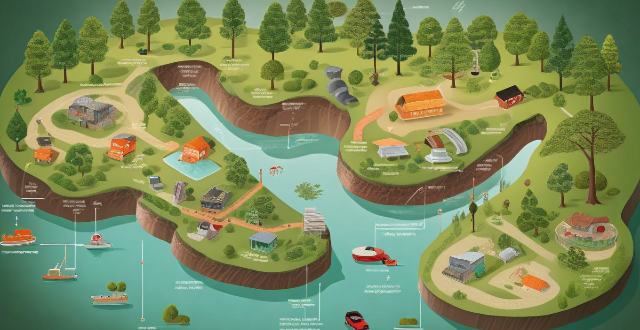This article provides a detailed guide on how to calculate your personal carbon footprint, which is the total amount of greenhouse gases released into the atmosphere as a result of your activities. It explains what a carbon footprint is, the importance of calculating it, and the steps involved in doing so. The steps include gathering information about your lifestyle habits, using online carbon footprint calculators, breaking down your emissions by category, identifying areas for improvement, setting goals, and tracking progress. The article emphasizes that taking action to reduce your carbon footprint is crucial for a healthier planet.

How to Calculate Your Personal Carbon Footprint
Calculating your personal carbon footprint is a crucial step in understanding your environmental impact and taking action to reduce it. Here's a detailed guide on how to do so:
1. Understanding Carbon Footprint
Your carbon footprint is the total amount of greenhouse gases, usually measured in carbon dioxide equivalents, that are released into the atmosphere as a result of your activities. This includes direct emissions from sources like driving a car, as well as indirect emissions associated with the production and consumption of goods and services.
2. Gather Information
Start by gathering information about your lifestyle habits. This includes:
- Home Energy Use: Electricity, heating, cooling, etc.
- Transportation: Commuting, travel, etc.
- Food Consumption: Meat, dairy, imported foods, etc.
- Shopping: Clothing, electronics, etc.
- Waste: Recycling and landfill contributions.
3. Use a Carbon Footprint Calculator
There are many online tools and calculators designed to help you estimate your carbon footprint. They typically ask questions about your lifestyle and then provide an estimate based on your answers. Some popular calculators include:
- EPA's Carbon Footprint Calculator
- World Wildlife Fund's (WWF) Carbon Footprint Calculator
- Climate Heuristic Personal Climate Footprint Calculator
4. Break Down Your Emissions
Most calculators will give you a breakdown of your carbon footprint by category. Take note of areas where your emissions are highest. Common categories include:
- Home Energy Use
- Transportation
- Food Consumption
- Shopping
- Waste Disposal
5. Identify Areas for Improvement
Once you have identified the areas where your carbon footprint is the largest, you can start making changes to reduce it. For example:
- Reduce Home Energy Use: Turn off lights when not in use, use energy-efficient appliances, etc.
- Optimize Transportation: Walk, bike, or use public transportation more often. Consider carpooling or electric vehicles.
- Eat a Plant-Based Diet: Reduce meat and dairy consumption, buy local and seasonal produce.
- Conscious Shopping: Buy less, choose durable items, support sustainable brands.
- Minimize Waste: Recycle more, compost, and reduce overall waste production.
6. Set Goals and Track Progress
Set realistic goals for reducing your carbon footprint and track your progress over time. This could be something like reducing your home energy use by 10% or cutting down on meat consumption.
Remember, calculating your carbon footprint is just the first step. The real impact comes from taking action to reduce it. Every small change counts towards a healthier planet!